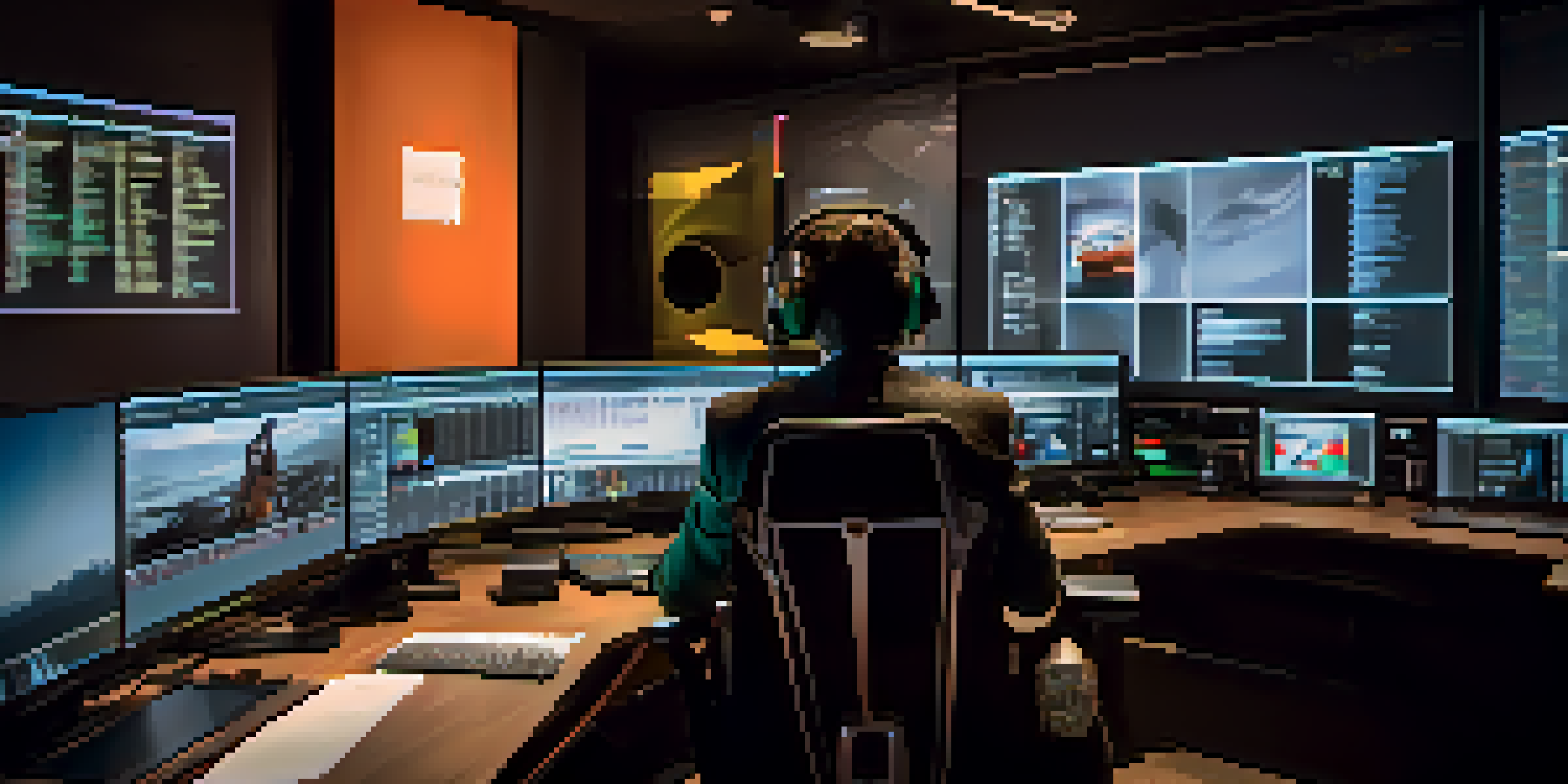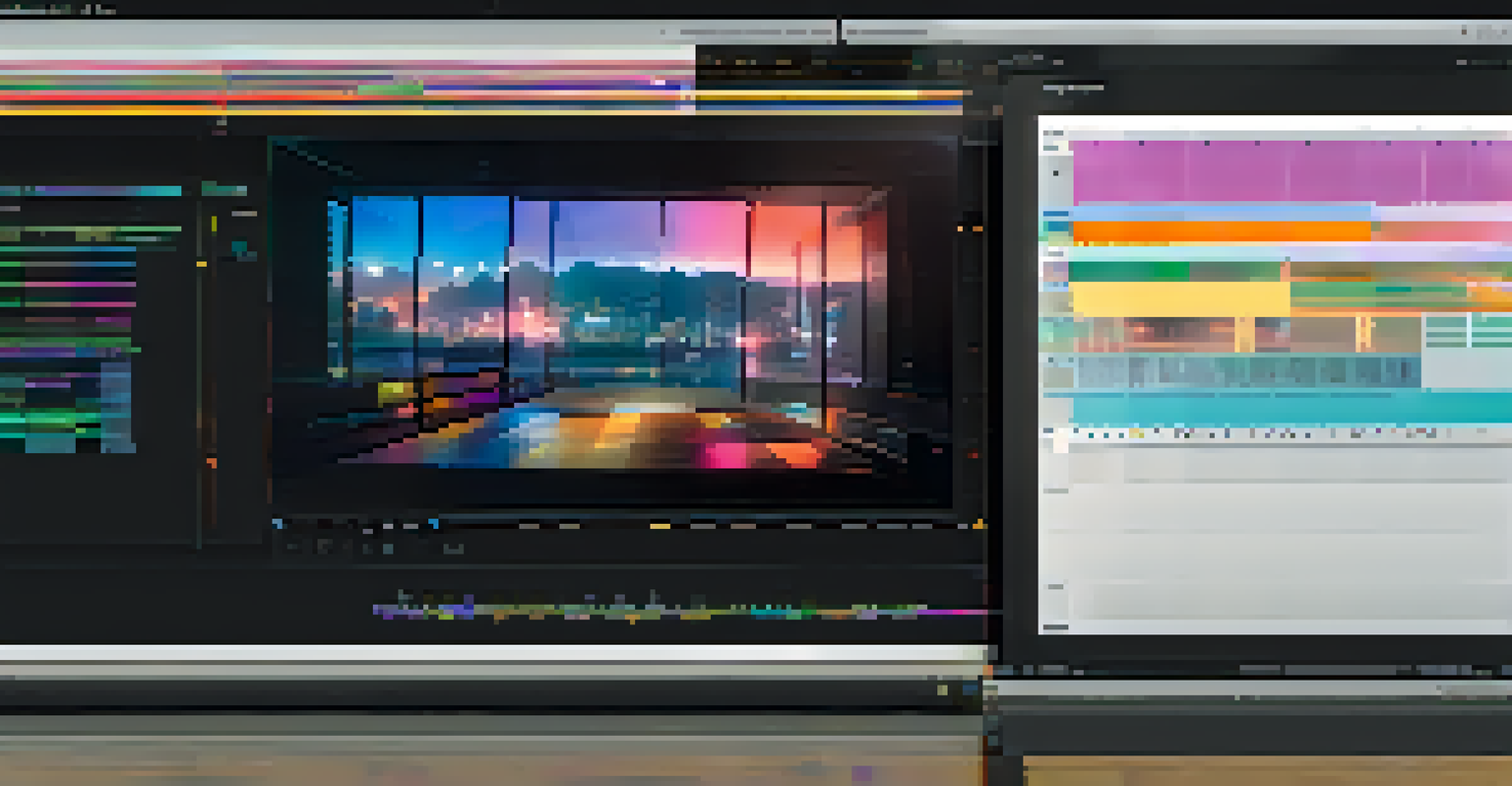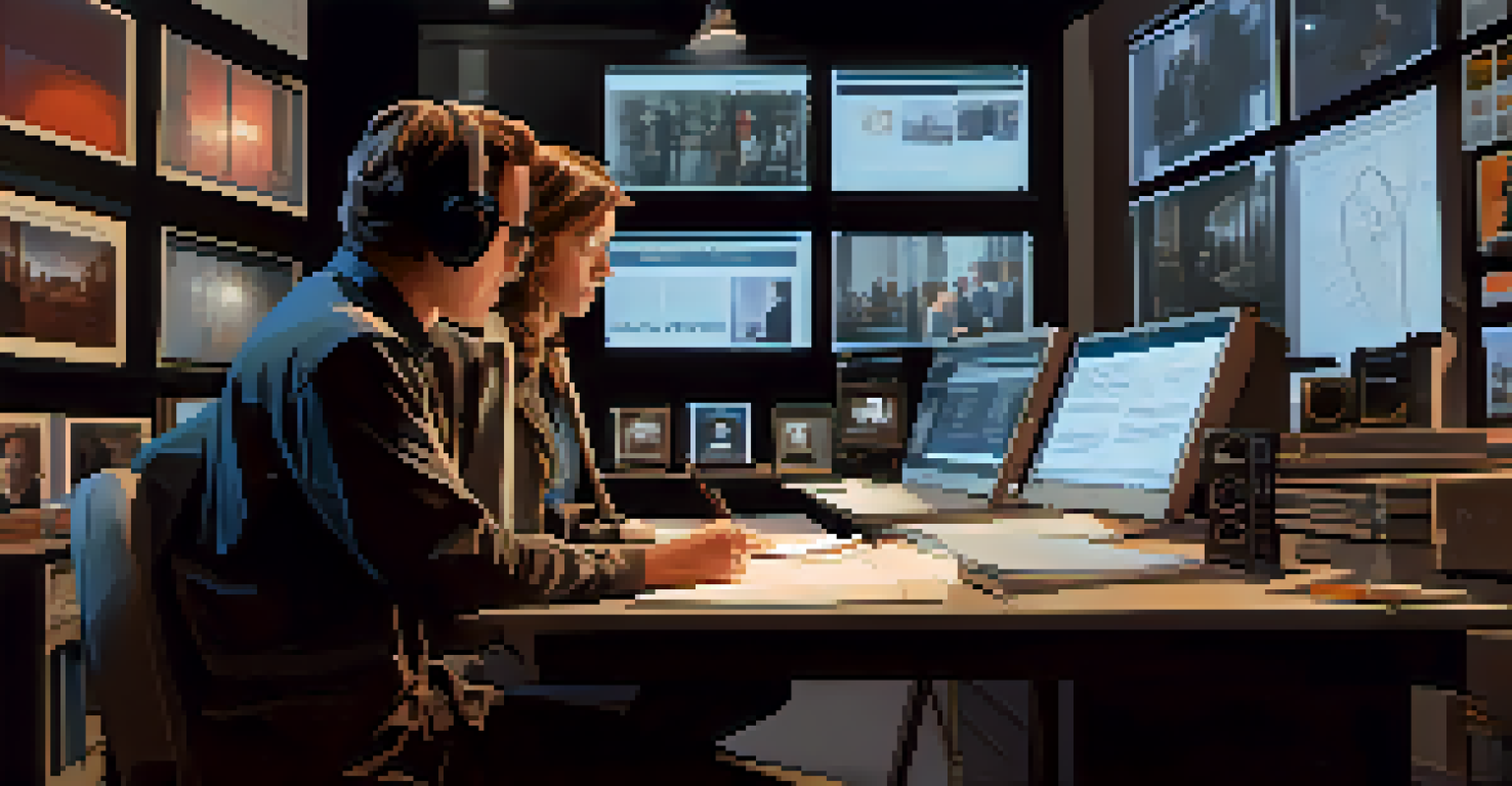Understanding the Film Editor's Role in Narrative Construction

What Does a Film Editor Do in Narrative Construction?
At its core, a film editor is responsible for piecing together raw footage to create a cohesive and engaging story. This involves selecting the best takes, trimming excess scenes, and determining the pacing of the film. Essentially, they breathe life into the script by ensuring that each shot contributes meaningfully to the narrative.
Editing is the art of making decisions. The best editor is one who can see the film as it should be, and then make it that way.
Film editing goes beyond simply cutting and pasting; it’s about understanding the rhythm of storytelling. Editors work closely with directors to achieve the desired emotional impact, which often requires a deep understanding of character development and plot progression. For example, a well-timed cut can heighten tension or provide relief, guiding the audience through the emotional landscape of the film.
Moreover, film editors often have a hand in shaping the overall narrative structure. They might suggest rearranging scenes to create a more compelling storyline or enhance character arcs. This collaborative process is crucial, as it helps to craft a story that resonates with viewers long after the credits roll.
The Importance of Pacing in Film Editing
Pacing is a critical component of film editing that directly influences audience engagement. It refers to the speed at which the story unfolds, affecting how viewers perceive tension, excitement, and emotion. Just like a well-composed piece of music, the editing rhythm can evoke feelings of anticipation or calm.

For instance, in action sequences, faster cuts can create a sense of urgency and adrenaline. In contrast, slower edits during dramatic moments allow audiences to process emotions and connect with characters on a deeper level. An editor's ability to control this pacing can make or break a film, highlighting their integral role in narrative construction.
Film Editors Shape Narrative Flow
Editors play a crucial role in arranging scenes and adjusting cuts to create a cohesive and engaging story.
Additionally, pacing isn't only about the speed of cuts; it also involves the strategic placement of pauses and transitions. A well-placed pause can enhance a pivotal moment, giving audiences time to reflect on the significance of a scene. This delicate balance is what makes editing an art form in its own right.
Creating Emotional Resonance Through Editing
One of the most powerful tools a film editor wields is the ability to shape emotional responses. By carefully selecting shots and arranging them in a specific order, editors can elicit feelings ranging from joy to heartbreak. This emotional resonance is essential for connecting viewers to the story and characters.
The editor's job is to bring clarity to a story, to enhance the emotional journey, and to create a rhythm that shapes the audience's experience.
For example, consider a scene where a character experiences loss. An editor might intercut between the character's reactions and flashbacks to happier times, creating a poignant contrast that deepens the emotional impact. This technique not only enhances the narrative but also makes the audience empathize with the character's journey.
Moreover, the use of music and sound design in conjunction with editing can amplify these emotional moments. A well-timed score can elevate a scene's intensity, and skilled editors know just when to let that music swell or fade. This synergy between sound and visuals is a hallmark of effective storytelling in film.
The Role of Continuity in Film Editing
Continuity editing is a vital technique that ensures a seamless flow of action and maintains the viewer's immersion in the story. Editors work meticulously to maintain consistency in elements like lighting, props, and character positioning from shot to shot. This attention to detail prevents distractions that might pull audiences out of the narrative.
For instance, if a character is holding a coffee cup in one shot, it should appear in the same position in subsequent shots to avoid confusing the audience. Such discrepancies can break the illusion of reality that films strive to create. This is why editors must have a keen eye for detail and an understanding of the story's visual language.
Pacing Influences Audience Emotion
The speed and rhythm of edits are essential in guiding the audience's emotional responses and maintaining engagement.
Furthermore, continuity isn’t just about maintaining visual coherence; it also involves ensuring that the story flows logically. Editors often need to make decisions about which scenes to keep or cut to preserve the narrative's clarity, which can be a challenging but rewarding aspect of their role.
The Editor's Influence on Narrative Structure
Film editors play a crucial role in shaping the narrative structure of a film. They can experiment with different sequences of scenes to find the most compelling arrangement for the story. This may involve moving scenes around or even creating new transitions that enhance the overall flow.
For example, a flashback can be inserted at a strategic moment to provide context or backstory, enriching the main narrative and creating a more engaging viewing experience. Editors often collaborate with directors and screenwriters to explore various structural possibilities, ensuring the film's story resonates effectively with the audience.
Additionally, an editor's choices can influence how a film is perceived. A non-linear narrative, for example, can create intrigue and challenge the audience, encouraging them to piece together the story's timeline. This innovative approach to structure showcases the editor's vital influence on narrative construction.
Collaboration Between Editors and Directors
The relationship between editors and directors is one of the most collaborative aspects of filmmaking. Directors often have a specific vision for their film, and editors help bring that vision to life by making creative choices that align with the director's goals. This partnership is built on trust and communication.
During the editing process, directors may provide feedback on the cuts and suggest adjustments, leading to a back-and-forth dialogue that refines the film. Editors must be adaptable and receptive, as they work closely with directors to achieve the desired emotional and narrative outcomes. This synergy is crucial for successful storytelling.
Collaboration Enhances Creative Vision
The partnership between editors and directors fosters a dynamic exchange that refines the film and elevates storytelling.
Moreover, the collaborative process allows for experimentation and innovation. Editors can propose alternative approaches or techniques that may enhance the film, pushing the boundaries of traditional storytelling. This dynamic exchange often leads to creative solutions that elevate the final product.
The Impact of Technology on Film Editing
In recent years, advancements in technology have dramatically transformed the film editing process. Digital editing software has made it easier for editors to manipulate footage, experiment with different cuts, and collaborate remotely with directors. This shift has opened up new possibilities for storytelling and creativity.
For instance, software like Adobe Premiere Pro and Final Cut Pro allows editors to work with a wide range of effects and transitions, making the editing process more efficient. Additionally, cloud-based platforms facilitate collaboration, enabling editors and directors to share feedback and make adjustments in real time, regardless of their physical locations.

However, while technology offers exciting tools, it also requires editors to continuously adapt and learn. Staying up to date with the latest software and trends is essential for editors to remain competitive in the industry. Embracing these changes can lead to innovative storytelling techniques that push the boundaries of narrative construction.